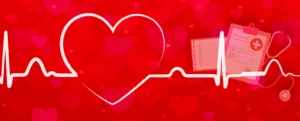Depressive Disorders
- Depression is the oldest and one of the most frequently diagnosed psychiatric illnesses.
- Transient symptoms are normal, healthy responses to everyday disappointments in life.
- Pathological depression occurs when adaptation is ineffective.
- Depression is an alteration in mood/affect that is expressed by feelings of sadness, despair, and pessimism.
Epidemiology
- 6.7% of persons aged 18 or older had at least one major depressive episode in the previous year.
- Gender prevalence
- Depression is more prevalent in women than in men by about 2 to 1.
- Age and gender
- Lifetime prevalence of depressive disorders is higher in those aged 45 years or younger.
- Social class
- There is an inverse relationship between social class and the report of depressive symptoms.
- Race and culture
- No consistent relationship between race and affective disorder has been reported.
- Problems have been encountered in reviewing racial comparisons.
- Marital status
- Single and divorced people are more likely to experience depression than are married persons or persons with a close interpersonal relationship (differences occur in various age groups).
- Seasonal interaction
- There is evidence that supports a seasonal decrease in social interactions during Fall and Winter seasons which may result in the development of Seasonal Affective Disorder (SAD)
Types of Depressive Disorders
- Major depressive disorder
- Characterized by depressed mood
- Loss of interest or pleasure in usual activities
- Symptoms present for at least 2 weeks
- No history of manic behavior
- Cannot be attributed to use of substances or another medical condition
- Persistent depressive disorder (dysthymia)
- Sad or “down in the dumps”
- No evidence of psychotic symptoms
- Essential feature is a chronically depressed mood for
- Most of the day
- More days than not
- At least 2 years
- Premenstrual dysphoric disorder
- Depressed mood
- Anxiety
- Mood swings
- Decreased interest in activities
- Symptoms begin during the week prior to menses, start to improve within a few days after the onset of menses, and become minimal or absent in the week post-menses.
- Substance- or medication-induced depressive disorder
- Considered to be the direct result of physiological effects of a substance
- Depressive disorder associated with another medical condition
- Attributable to the direct physiological effects of a general medical condition




